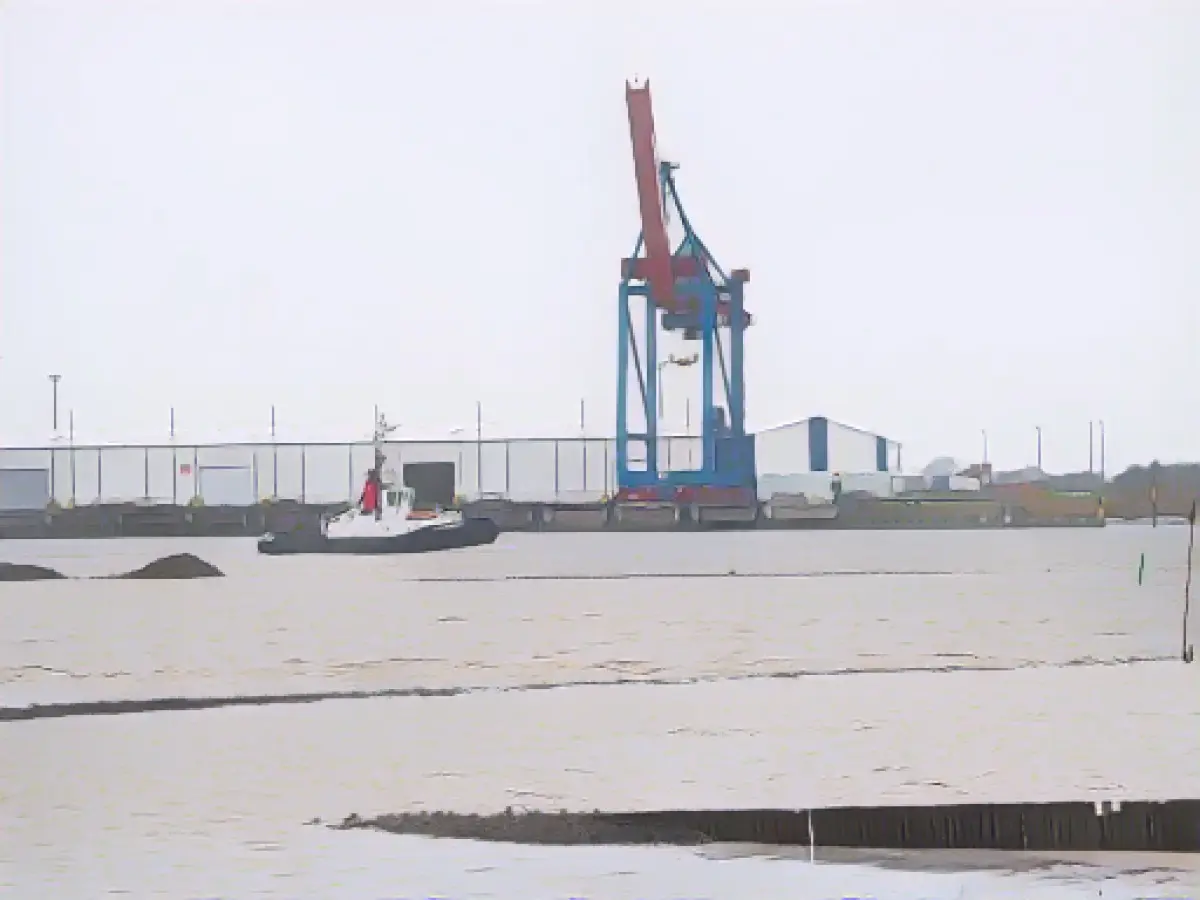Seaport of Brake: Anticipated Boom and Traffic Management
Prepare to see more action at Brake's seaport on the Lower Weser! A recent forecast suggests an uptick in cargo handling in the future. This optimistic outlook stems from a port development strategy introduced in Brake on Wednesday, backed by the state-owned operator NPorts.
The port saw 6.85 million tons of goods moved through its sea-facing side last year. Compared to 2021's 5.09 million tons, this is a significant leap and breaking a new record. The increase in animal feed and cellulose transhipment, accompanied by wood handling, contributed to this boost.
According to the same forecast, the port will handle 7.24 million tons in 2025. This estimate assumes no alterations to the Lower Weser North's navigation channel. The channel extends from Bremerhaven to Brake, and local residents are currently debating its deepening. If deepened, the seaward side's throughput may hit 8.29 million tons in 2025.
To cater to the expected surge, the report recommends expanding transhipment structures. For instance, constructing a third berth at Niedersachsenkai would accommodate wind power components along with other goods.
Managing shipping traffic effectively is crucial. Therefore, measures must be taken to avoid potential delays due to congestion.
Let's delve deeper into how Brake's seaport can tackle these challenges:
- Modernized Infrastructure and Expanding Capacity: Investments have upgraded the port facilities, such as the Niedersachsenkai, which opened in 2009, providing additional space for specialized and heavy cargo trucks. This expansion has contributed to the port's versatility in handling various commodities like packaged goods, heavy machinery, and even wind energy plants.
- Trimodal Terminal Operations: The port's trimodal terminal accommodates cargo shipping by sea, rail, and road transportation. This flexibility ensures efficient handling and storage based on the goods' specific requirements.
- Specialized Subsidiaries and Joint Ventures: Subsidiaries like LogServ, responsible for goods handling and storage, and B-LOG, dedicated to GMP+ compliant agricultural products and breakbulk transport, help streamline processes and improve efficiency.
- Handling Agricultural and Forestry Products: The port handles an impressive 4 million tonnes of agricultural goods annually. Key exports include feed, feed additives, grain, and eco-products. It also transships more than a million tonnes of paper pulp annually, making it Germany's largest import port for this commodity.
- Maritime Proteins and Freight Services: The port terminal in Bremen specializes in fish meal and krill meal transshipment. The facility's impressive silo capacity and daily unloading capability enable efficient handling of this specialized cargo.
- Ship Services and Chartering: The port offers ship services, including chartering ships and managing administrative matters typically associated with the shipping industry. This aid and expertise help manage the fleet, minimizing delays.
- Collaboration with Shipping Industry Professionals: Partnering with experienced shipbrokers who have access to shipowners helps in negotiating favorable chartering terms. This collaboration can effectively manage shipping traffic, ensuring that ships are readily available.
In conclusion, Brake's seaport is not only prepared for an increase in throughput but also committed to effective shipping traffic management. Employing strategies like modernized infrastructure, trimodal terminal operations, and collaboration with shipping industry professionals will help it navigate the foreseeable surge in handling goods.








